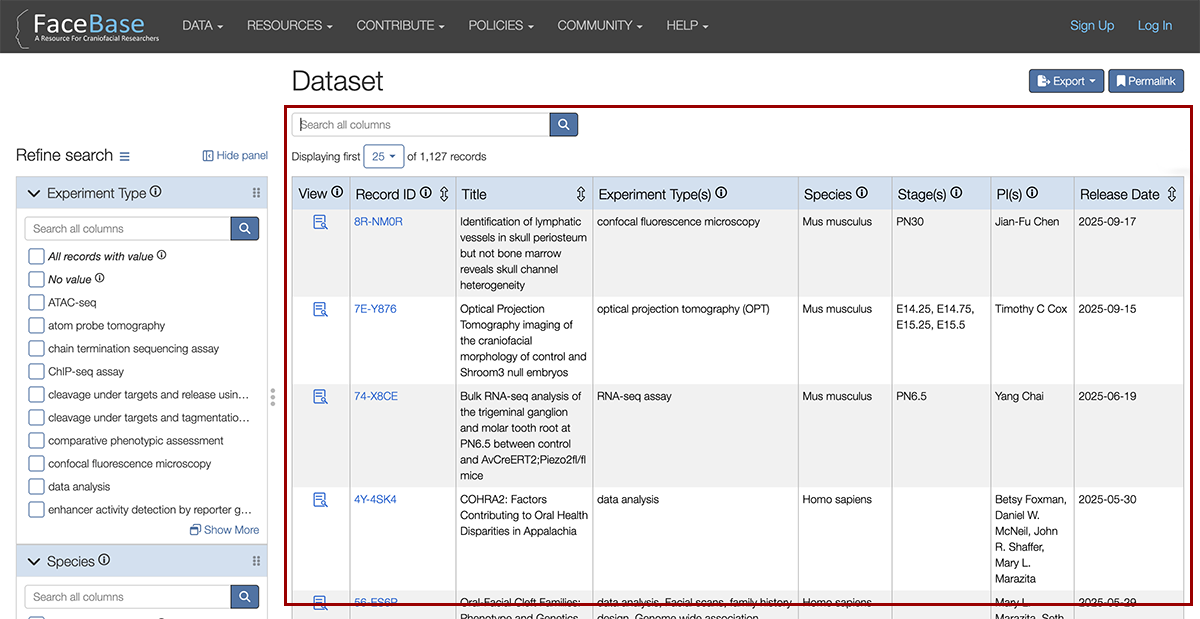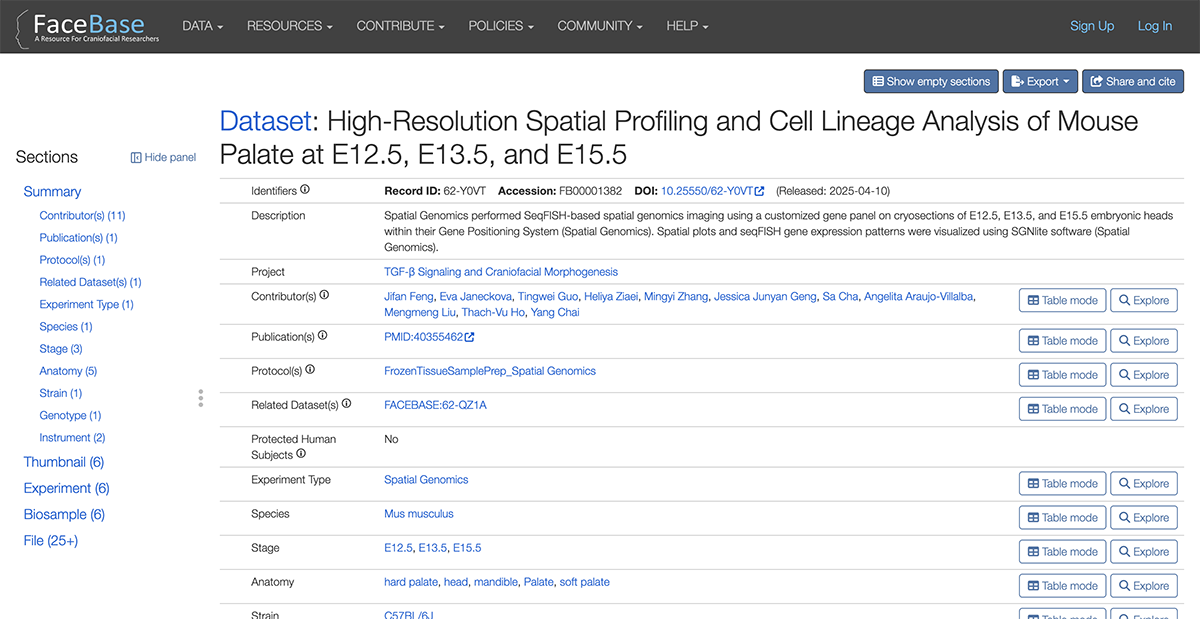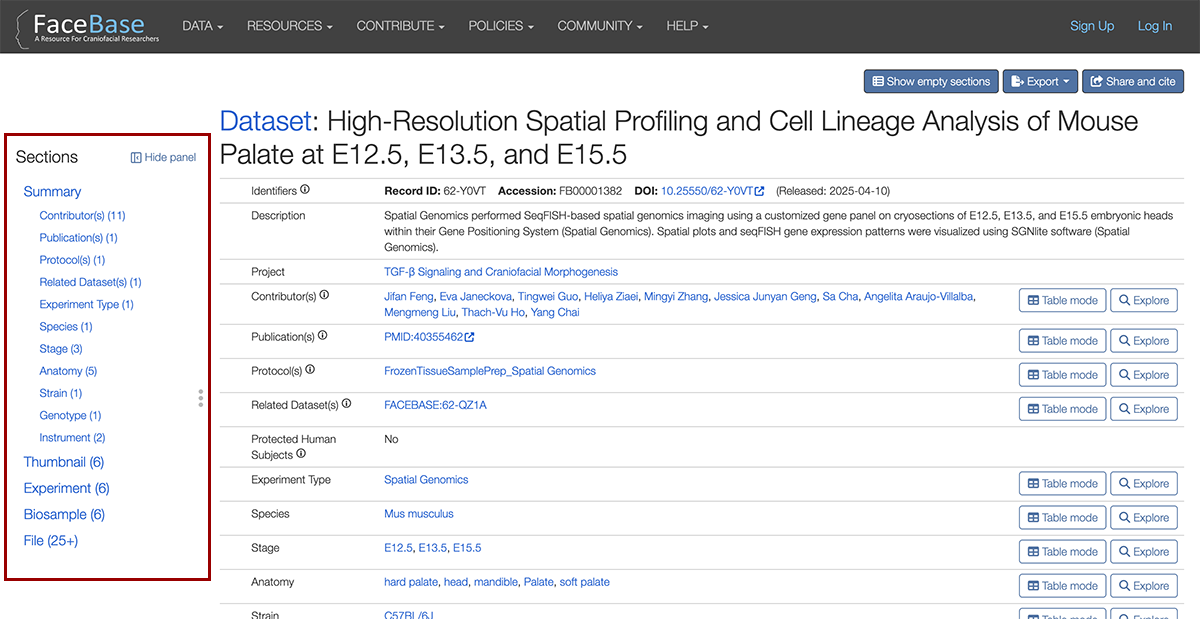Using the Chaise Data Browser
The Chaise Data Browser is the configurable web interface of the DERIVA platform for exploring, searching, and managing structured data. It provides dynamically generated views of data based on the underlying data model and metadata annotations.
This documentation introduces Chaise for both general users and those evaluating DERIVA as a data management framework. Screenshots use the FaceBase deployment as an example; however, each DERIVA deployment can configure Chaise differently — customizing visible columns, table layouts, filters, record layouts, access policies, etc. - to best represent the data model of that domain.
For those with data submitter or administrator roles, see Managing Catalogs to learn more about managing the model and annotations.
Terminology:
A recordset page displays a table of multiple records (similar to search results).
A record page displays detailed information about one record, including related data and files.
Recordset (Search) Page Overview

Common elements of a recordset (search) page include:
Filtering sidebar
Search bar above the results
Search results based on filters
Configurable: Deployments can customize which tables appear, default filters, and how metadata columns are displayed through model annotations.
Search Results

The main body of the page displays search results as columns of metadata for each record. Deployments can configure which columns are shown and in what order. Column headers are sortable.
Use the larger search field above the results to enter keywords and search across all visible columns.
Under the hood: Each Chaise search or filter action corresponds to a REST query to the DERIVA backend (ERMrest), ensuring consistent data access across the web interface, APIs, and programmatic tools.

Clicking the View details icon opens the record page for that dataset, showing its metadata, related records, and files.
Record Details Page

A record page provides detailed information about a single record. It begins with a Summary section that lists key metadata fields.
Tip: Metadata tags act as dynamic filters. Clicking a tag link—such as Spatial Genomics under Experiment Type—will open a new search showing all records with that attribute.
To the left is a Sections sidebar that links to the different content types available for the record (e.g., Thumbnails, Files, Related Records), along with their counts. This functions much like a table of contents for the page.

Clicking any of those links, for example Thumbnail (6):

will take you directly to that section of the record page:

Configurable: The structure and order of sections, as well as the metadata displayed within each, can be controlled through model annotations.
Exporting Data (CSV, BDBag, API)

You can download a CSV file of the metadata for the current search results by clicking the Export button and selecting Search results (CSV).
Deployments may also offer options to export associated files for each dataset, either directly from a record page or programmatically in BDBag format. For more information, see Managing Data in DERIVA with deriva-client.
Configurable: Export options, including which formats and data scopes are available, are determined by deployment settings and access permissions.
Summary
Chaise provides a powerful and flexible interface for exploring complex scientific data models without requiring custom web development. Its behavior, appearance, and available data are determined by model annotations, making it adaptable for diverse domains.
While this guide uses FaceBase as an example, the same principles apply to any DERIVA-based deployment. Each instance of Chaise reflects its unique model, metadata, and community-specific vocabulary.
